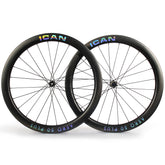11 important tips for the wet season
Cycling can be a great and fun activity. It is an excellent way to spend your free time and also a way to exercise. Some people have made it their career and built their lives around it.
Whether you do cycling as a sport or for fun, you should definitely take precautions. Security is not an option and should be a top priority. Cyclists are often in danger in the wet season. The roads are usually wet, which reduces traction and increases the risk of accidents.
Statistics have shown that one in three cyclists is involved in an accident when cycling during the wet season. That's why experts have created a list of do's and don'ts when cycling. These tips are intended to help both amateur and professional cyclists stay safe. As follows:
Choose your road carefully
It is important to remember that different roads are affected by bad weather conditions in different ways. Make sure you are familiar with the road you choose if you want to minimize the risk of an accident. If you are unfamiliar with the area, consider hiring a local guide to explain the conditions in the area.
Walk around the icy areas
If you are traveling in winter and the roads are covered with ice, you should avoid the icy areas if you have enough time. If you don't have time, you can try reducing the speed of the bike and riding over them. Ice surfaces can cause your bike to skid and you to lose control. It has been proven that most accidents occur because cyclists ignore the icy areas and ride over them at high speed.
Avoid sudden movements
You can try out unusual driving maneuvers on dry roads, but this would have negative effects on wet roads. If you cannot avoid the wet road, you should avoid sudden movements as they increase the risk of your bike slipping and you falling. It is also recommended that you drive at a reasonable speed on these roads.

Photo credit: www.cyclingweekly.com
Don't ride on manhole covers
You may think that these covers offer the best protection from the utility hole, but they can be dangerous in the rainy season. The water may have moved them an inch away from the supply hole, making them the best booby trap. Riding them at this time of year could cause you to trip, fall and injure yourself.
Apply both brakes
If it is raining and you need to use the brakes, make sure you apply both brakes evenly. This helps your bike reduce speed effectively. You should also ride your bike in the middle of the road. This will help you avoid rocks and debris that may have washed up on the side of the road.
Reduce speed in curves
When cornering in bad weather, you should reduce your speed and not change direction too quickly. The wet road surface reduces traction and increases the risk of the bike slipping. Do not pedal until you are out of the curve and in a stable position.
Brake earlier than normal
Because your bike has less grip on wet surfaces than on dry surfaces, you should apply the brakes earlier than normal. Be sure to brake every time you turn a corner to avoid falling over. It is known that many cyclists only brake when they approach the designated stopping area. This way they end up hurting themselves. You can do some exercises at home before you go.
Reduce your frontal area
Strong winds in wet conditions are normal. In this case, make sure to reduce your frontal area by leaning closely against the handlebars. Strong winds can cause health complications in the chest area. Leaning close to the handlebars also reduces the area that can be hit by the wind. It has been proven that the cold can impair your judgment, with some cyclists unable to see a curve or obstacle in the road.
Avoid clustering
If you are riding in a group, it is important to leave enough space for the cyclist in front of you. This gives you a clear view of the road and enough time to react if something happens in front of you. When riding in a group, it is common for cyclists to trip and fall on top of each other. Don't let yourself fall behind the group or you'll have a hard time catching up.
Keeping warm in bad weather
Dress warmly when cycling. You can put on the rain jacket and gloves to avoid getting wet. Avoid carbon rims when riding downhill as they are known to have less grip. With them it is impossible to apply the brakes successfully.

Photo courtesy of Showers Pass
Seek professional advice
Amateur cyclists should make sure that they seek the opinions and advice of people who have been cycling for a while. These people have the knowledge and skills that can be useful to you when cycling. You can watch some popular YouTube videos that will show you what to do and what to avoid.
conclusion
Horse riding can be a great experience. It gives you the opportunity to meet up with your friends and have a great time. However, driving on a wet road is difficult and requires you to know the tips mentioned above. Practice them and apply them on your next ride. They can save your life.





